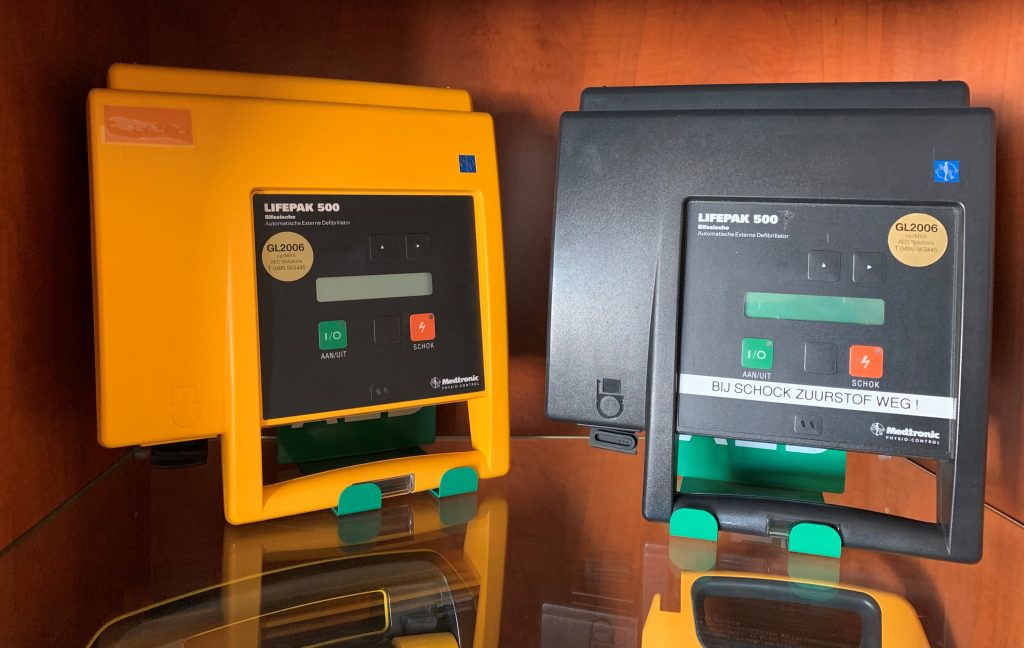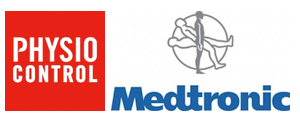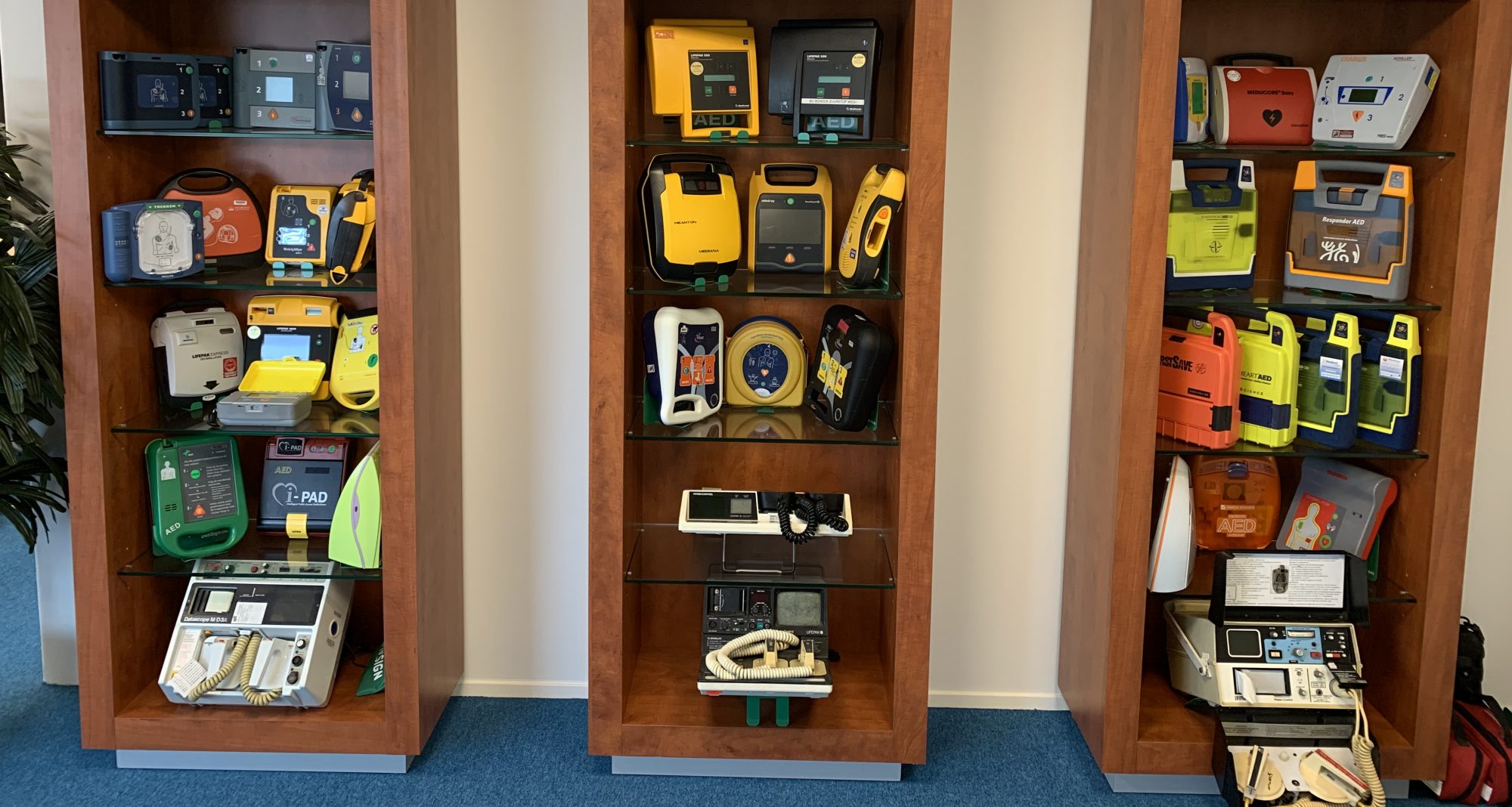
The Medtronic/Physio-Control Lifepak 500 AED (yellow, left in the photo) was one of the first AEDs to be sold on a large scale. This AED appeared on the market in 1997 and production ceased on January 26, 2007.
Medtronic Physio-Control indicated at the time that the accessories would remain available for at least 7 years after production ceased. The Lifepak 500 AED was officially declared “end-of-life” on January 31, 2015. Given the large number of AEDs sold however, accessories for the Lifepak 500 AED are still well available to date.
The name “Lifepak” is therefore written with a k and not with ck. This name is often incorrectly spelled as “Lifepack” by many users and also providers of these AEDs.
Given the popularity of the Lifepak 500 within the professional market, the Lifepak 500 has also been available with rechargeable batteries, but as far as we know it is used less often.

The Medtronic/Physio-Control Lifepak 500 DPS (black, on the right in the photo) is a special version of the “standard” Lifepak 500 AED. The abbreviation DPS stands for Defibrillator Public Safety. This version was considered a special “robust” version of the “normal” Lifepak 500. The 500 DPS was tested according to various military standards, based on pressure, shocks, vibrations, salt and acceleration and was suitable for regular use. The appearance is also slightly different: Instead of the yellow colour of the Lifepak 500, the DPS is entirely in black.
The Lifepak 500 DPS was a fairly rare model. The copy that is in the possession of the AED Museum had served as AED on the beaches of Vlissingen, The Netherlands, for many years, due to the particularly robust properties, in particular its resistance against salt water and sand contamination.
Both the Lifepak 500 and the Lifepak 500 DPS have been succeeded by the Physio-Control Lifepak 1000 AED, which has been available since the end of 2006.

